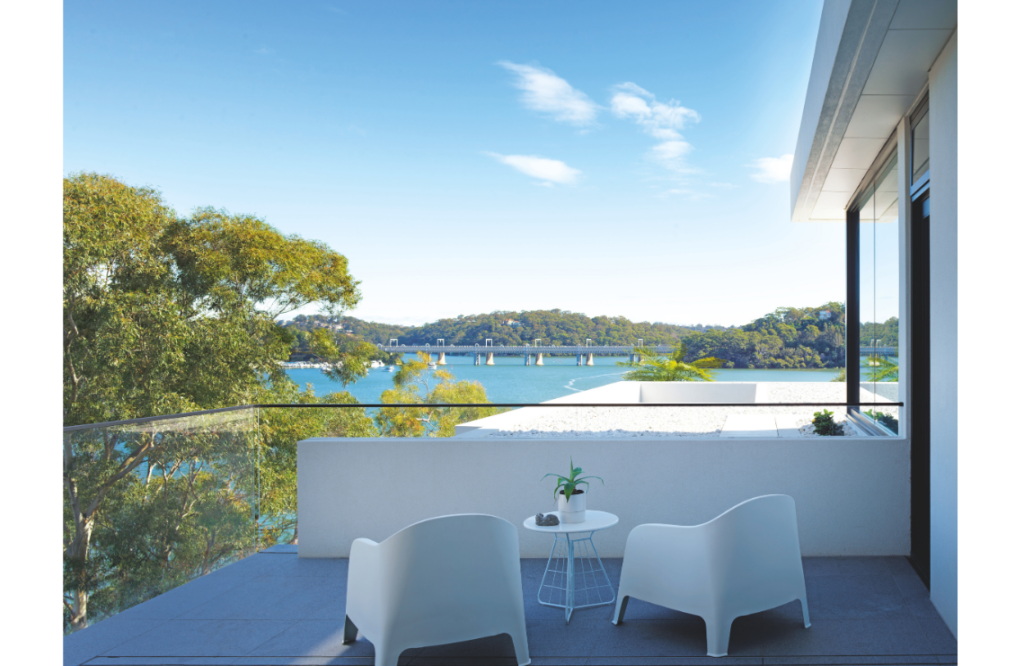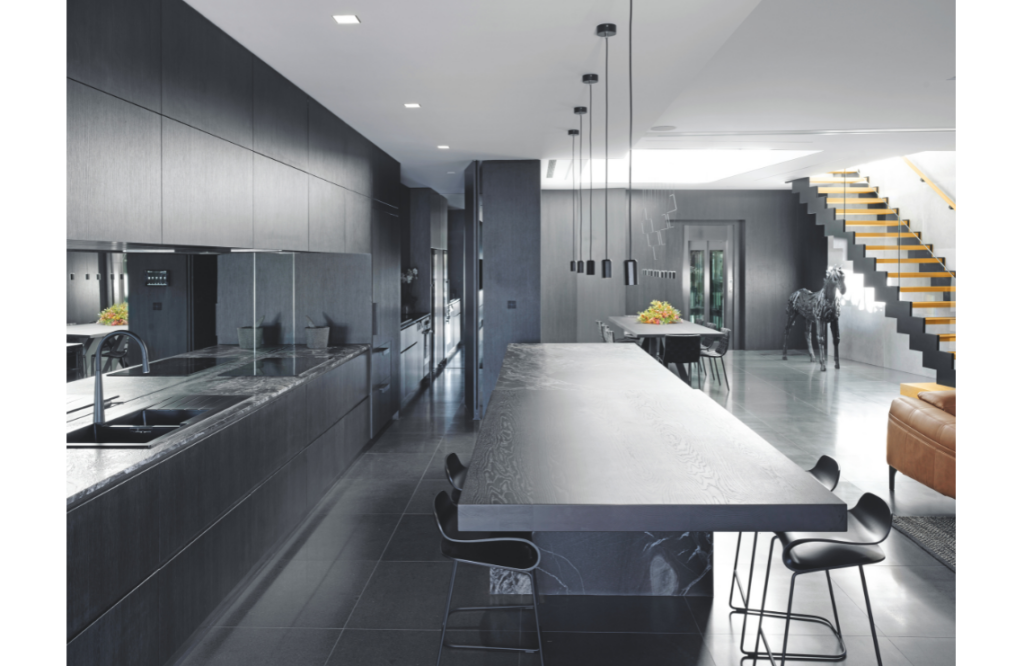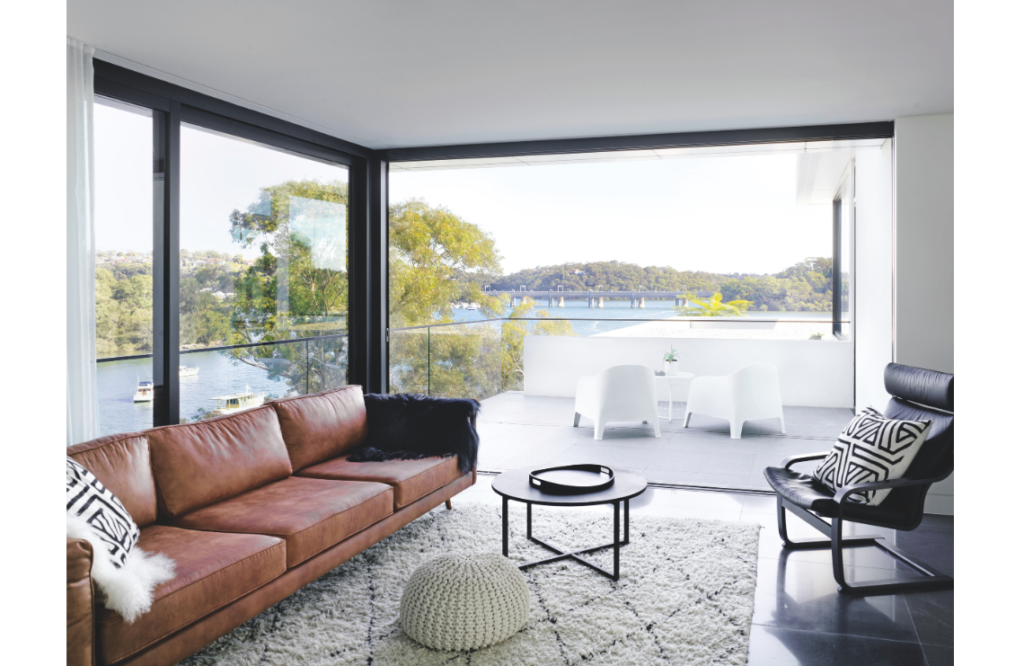It is not common to have a house designed and built to come second to the landscape that surrounds it, but Oyster Bay House is one such project. Inspired by the architecture of Richard Meier, this home accentuates its manmade characteristics, creating a unique and intricate relationship with the natural landscape.
“The design is inspired by the way Richard Meier envisions his buildings, drawing attention to the landscape through a contrasting and complementary relationship,” says Peter Couvaras of Couvaras Architects.

The natural environment that surrounds the Oyster Bay House is certainly one that deserves to be captured and appreciated. On a steep headland in Oyster Bay, this property sits on the edge of the Georges River, looking across the tranquil water, lush vegetation and onto the historic Como Railway Bridge. The homeowners of the house, a couple now in their late 50s, had lived on the land for many years before deciding to build their dream home. After 10 years of designing, developing and building this property, the result is a manmade spectacle that vividly distinguishes itself from the organic surroundings while internally framing the shapes of nature to highlight and respect
the landscape.
“Australian architect Richard Lepastrier’s approach to focusing on nature and framing views resonates strongly with me … the landscape is slowly but spectacularly revealed as you move through the site and the house, with every window framing a view of the waterfront, river, sky or trees,” says Peter.

Oyster Bay House is a three-storey, four-bedroom, four-bathroom home with study nook, pool, spa, four-car garage plus workshop, as well as a self-contained apartment for when the owners’ children and grandchildren come to visit. A key feature of the house is the three-storey atrium in front of the foyer, which is the singular organising space of the residence, visually connecting the three levels and allowing sunlight to filter deep into the floor plan. This feature was the result of one of the biggest design challenges — combatting the shape and steep slope of the site. Beneath this atrium sits the formal eight-seater dining table, with pendant lights running the length of the table. Bathed in natural light, the black tones and moody atmosphere of this space once again reflect the complex relationship this house exhibits between the organic and the manmade.

From the street, a garage and gate present a private facade to the house. A landscaped and illuminated pathway leads you over a koi pond and through the front door, where you’re immediately confronted with a panoramic view of the Como Bridge and Georges River. While the external facade is characterised by crisp and angular white forms, the interior has been finished in dark, moody tones. All these details and finishes were specifically chosen to contradict and highlight the surrounding natural environment.
“Oyster Bay House is a manmade object in the landscape, but the natural environment is the focus of the design, and it will forever change and reveal itself in spectacular ways”, says Peter.


































